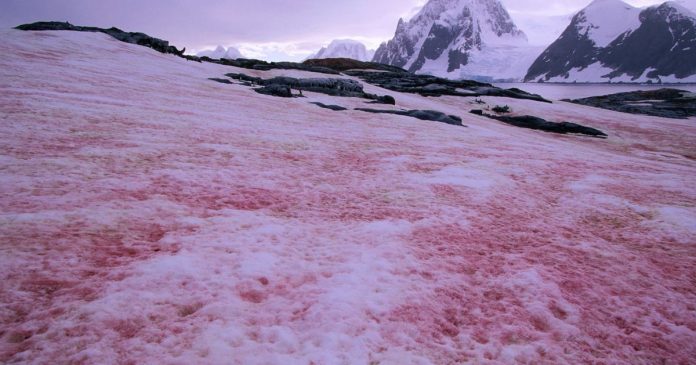DIRTY SNOW
A type of algae normally found in Greenland has started to develop in northern Italy-and the glaciers are turning pink.
Even though this is a stunning touch that transforms the mountaintops into an exotic world, reporters state that pink snow is clearly a pretty bad sign.
WHAT WE KNOW
The pink color comes from the blossoming algae. Although the full extent of its effect on the climate is not fully known, it could increase the rate at which the snow melts away.
Normally, more than 80% of the sun’s light is transmitted back into the atmosphere. As the ice changes color, “strawberry snow,” as it’s sometimes called; the ability to reflect heat loses meaning that leads glaciers to start melting faster.
According to Biagio Di Mauro of the Italian National Research Council; pink snow is probably caused by an organism that thrives in the ‘Dark Zone’ of Greenland. It’s a region where the ice is still melting, causing extensive darkening along the western edge of the ice cap.
“The algae is not toxic, it is a common occurrence that happens in the middle latitudes as well as in the Poles during the spring and summer seasons;” Di Mauro told the Guardian in an interview.
Nevertheless, “all that darkens the snow causes it to melt as it accelerates the absorption of radiation,” Di Mauro said.
ARE THE ALPS MELTING FOR GOOD?
Last year, a report predicted that by 2100 two-thirds of the glacier ice in the Alps would melt. Work reported in The Cryosphère newspaper warned that half of the ice on the 4,000 glaciers in the mountain chain will be gone by 2050; and two-thirds will be dissolved by 2100 owing to the detrimental impact of global carbon pollution.
Unsteady glaciers are also a threat to Alpine towns and tourism areas. Researchers also established an “intimate knowledge of how glaciers work;” Fabian Walter, a seismic glaciologist at ETH Zurich, told the New York Times in 2019. Yet there’s still “a lot we don’t know about how, why, or when a specific body of ice could collapse,” he says. “With climate change, the landscape is changing in ways that are hard to predict.”
Scientists know that the snow is disappearing from the Alps. So several glaciers could disappear this century because light snowfalls could not offset the melting ice below.
“Less strong rainfall during winter and higher air temperatures during spring and summer are projected to support the development of snow-and glacier-algae;” said Biagio Di Mauro of the Italian National Research Council.
Source: Euronews































